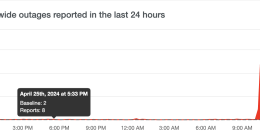
November 5, 2020 6 min read
Opinions expressed by Entrepreneur contributors are their own.
This is the third in an exclusive series of articles from Total Alignment authors Riaz Khadem and Linda Khadem titled “The Alignment Factor.” Check back in every Thursday for new installments.
At a time when social media is bombarding us with information and misinformation and when the pandemic is negatively impacting all of our businesses, it is critical to avoid distractions and clearly navigate toward success.
Challenging as it might seem, it is possible to survive and even thrive by simplifying and maintaining a clear focus through what we call a One Page of meaningful information. The key is knowing what information is most critical to your success.
Related: ‘The Alignment Factor’: Market Alignment With Segmentation and Differentiation
Vision of Success
As an entrepreneur and the owner of a small business, what does success mean to you and your company? Of course, success might mean simply “staying in business during the pandemic.” But having a vision of success beyond the pandemic is essential, and you should include in that vision the expectations of your key relationships (i.e. customers, creditors, suppliers and partners) and tangible results that will indicate they’ve been fulfilled. We call these indicators Critical Success Factors.
For example, to measure your success in satisfying customer relationships, you could look at your percent of growth in sales, percent of your sales from the same customers or the customer-satisfaction index based on a survey of customer feedback. The creditors would be interested in your debt/equity ratio, net worth and credit score. Your suppliers will require clear specifications, loyalty and on-time payments. A supplier-satisfaction index that measures the supplier requirements can also be obtained through a supplier survey. Finally, your partners will be interested in your financial success that could include net margin and Economic Value Added (EVA), which measures your overall financial condition.
These are just a few examples to think about. Once you have come up with a list of Critical Success Factors that are most valuable to you, you have the beginning of a page of meaningful information.
One Page Focus
Next, it is important to know the current baseline status for each of the Critical Success Factors. For example, what is the percent of growth in your sales, percent of repeat business or your current customer-satisfaction index? What is your current debt-equity ratio, or net margin?
The next step is to set reasonable goals for each Critical Success Factor. There are three we recommend: Minimum, Satisfactory and Outstanding. The Minimum goal is the acceptable threshold of performance. Outstanding is the best possible level, and Satisfactory is your next achievable step toward the Outstanding. These goals can provide you with the motivation for action. If the Outstanding goal is long-term and challenging, you might need to move your Satisfactory goal a few times as you progress toward the Outstanding.
The factors that you have identified are each important, but not equally so. First analyze their relative importance, then assign a weight to each by distributing 100 points among them. The result of this exercise is a list of factors (with weights), current status and your three goal levels. You have basically set up your dashboard for success. Your Critical Success Factor in the first column, relative weight in the second, status in the third and the three goal levels in the fourth, fifth and sixth columns. We call this your Focus Report.
Review and Reflect to Move Toward Success
To keep moving forward, it’s important that you establish a weekly rhythm of reviewing your progress on your Focus Report. Make a formal appointment with yourself and enter it into your calendar. And don’t cancel it!
Look at the current status of each factor and compare it with the three goal levels. Think about what happened during the week that helped or hindered your progress. Can you identify an action that produced a good result, and therefore repeat it? Was there a negative result that requires attention? Keep on top of your current status and how far you’re progressing toward your goals.
Pick one of the factors for in-depth analysis. This could be a factor with the highest gap or one with the lowest gap from the Satisfactory goal. Your decision depends on the weight you’ve assigned. A factor might have a high gap but might not be as important as another one with a low gap. Naturally, you would pick the one with low gap but of high importance, a factor that could be easier to tackle and improve, and one that could produce highly beneficial and motivating results.
For the selected factor, you will need to develop an action plan for improvement, one that requires a root-cause analysis. You can find guidelines for action-planning in management literature. Generally, an effective one will involve identifying the actual problem behind the poor performance, the root causes, the solution strategy and action steps to implement the solution strategy.
Once you have come up with a creative action plan, it becomes your primary focus in the following week. Each subsequent week provides a new opportunity to review your data, reflect, learn and witness progress. That learning will impact adjustments, and your progress will encourage you to stay on course and keep improving.
Cascade It
If you discipline yourself in following the simple guide in this article, you will be amazed at the benefits you will derive. Naturally, you would want to pass your learning to others. We recommend that you think of cascading the process described in this article throughout your organization. Whether you are an entrepreneur with a few employees or hundreds, you can encourage each person to create a One Page that includes the key results for success in the same way you did. These key results or Critical Success Factors can come from measuring the objectives of the job, or from measuring the expectations of four key relationships: customer, supplier, boss and employer. Whatever methodology is used, the outcome can be a set of Critical Success Factors for the person that fits in said One Page and determines their Focus Report.
Transfer your own learning from your experience with the concepts in this article with your collaborators. Imagine all your employees striving for success based on indicators of key results they can each impact!
Related: ‘The Alignment Factor’: The Keys to Internal Alignment
Stay Focused
With your One Page Focus Report in hand, you can avoid the distracting voices trying to capture your attention. Use it as a safety shield against the bombardment of information and misinformation. Just keep your eye on the One Page, and use it as a clear guide to navigate your business towards success.
This article is from Entrepreneur.com







